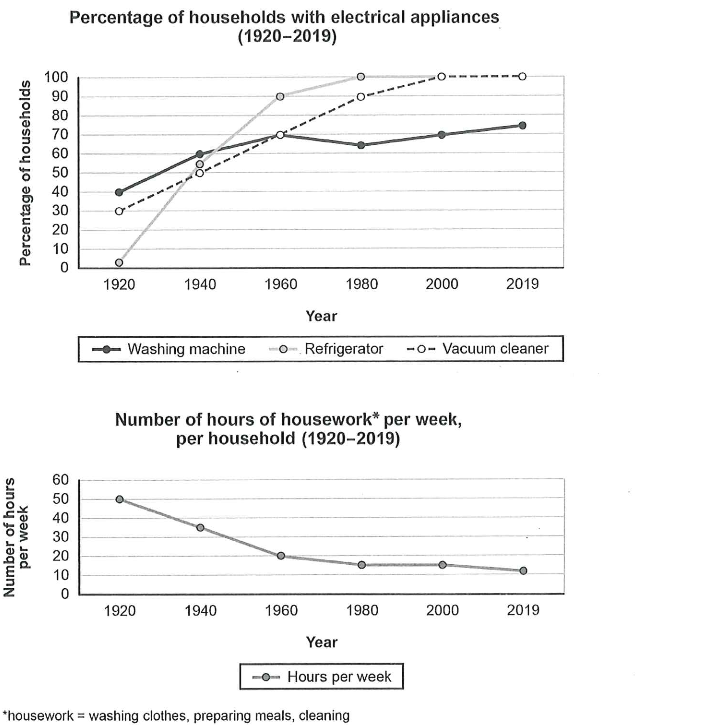Stony
Nov 29, 2021
Writing Feedback / The percentage of household with electrical appliances and the number of hours of housework per week [2]
The charts illustrate the percentage of household with electrical appliances and the number of hours of housework per week between 1920 and 2019.
In general, after 1920, more families started to purchase and install electrical devices in their own homes. The lager number of electrical products purchased had resulted in a decrease in the number of housework hours.
In 1920, the percentage of people using all three appliances were relatively low. The figures for washing machine and vacuum cleaner were approximately 30 percent to 40 percent, while refrigerator usage was nearly 0 percent. With the limited number of uses in electrical appliances, the number of hours doing the housework during that period was equivalently high, at about 60 hours per week. However, in 1960, there was a sharp rise in the proportion of electrical appliances being purchased in homes, which led to the decline in the hours spent on household chores to 20 hours weekly.
In 2019, the percentage of vacuum cleaner and refrigerator being used reached the maximum, 100 percent. Meanwhile, the washing machine experienced a gradual growth and reached the highest peak of almost 80 percent. This, in turn, cause the dramatic decrease in household working hours to only 10 hours per week
the changes in ownership of electrical appliances and amount of time
The charts illustrate the percentage of household with electrical appliances and the number of hours of housework per week between 1920 and 2019.
In general, after 1920, more families started to purchase and install electrical devices in their own homes. The lager number of electrical products purchased had resulted in a decrease in the number of housework hours.
In 1920, the percentage of people using all three appliances were relatively low. The figures for washing machine and vacuum cleaner were approximately 30 percent to 40 percent, while refrigerator usage was nearly 0 percent. With the limited number of uses in electrical appliances, the number of hours doing the housework during that period was equivalently high, at about 60 hours per week. However, in 1960, there was a sharp rise in the proportion of electrical appliances being purchased in homes, which led to the decline in the hours spent on household chores to 20 hours weekly.
In 2019, the percentage of vacuum cleaner and refrigerator being used reached the maximum, 100 percent. Meanwhile, the washing machine experienced a gradual growth and reached the highest peak of almost 80 percent. This, in turn, cause the dramatic decrease in household working hours to only 10 hours per week

16task1.png
